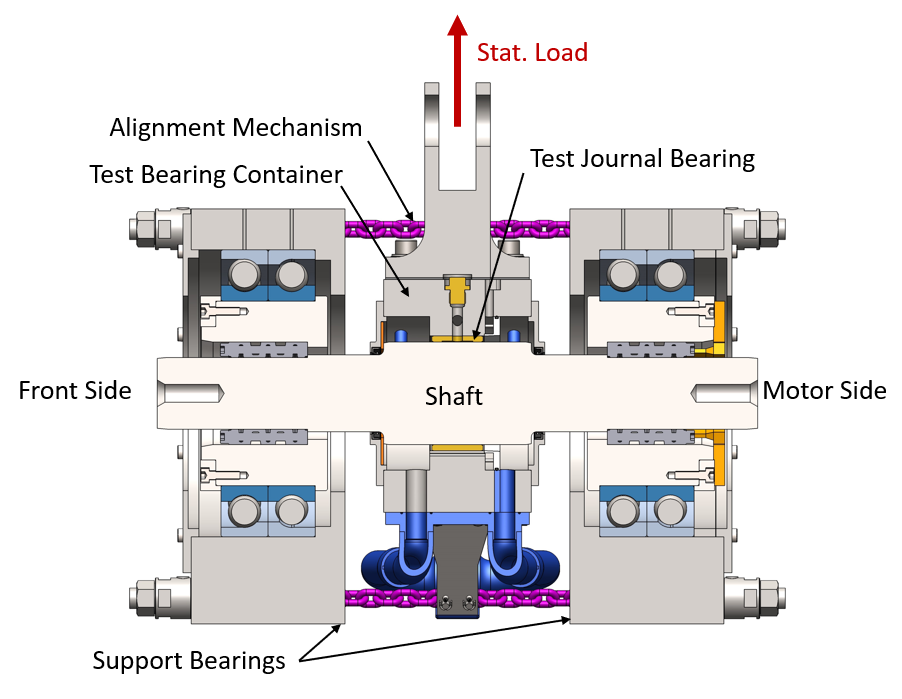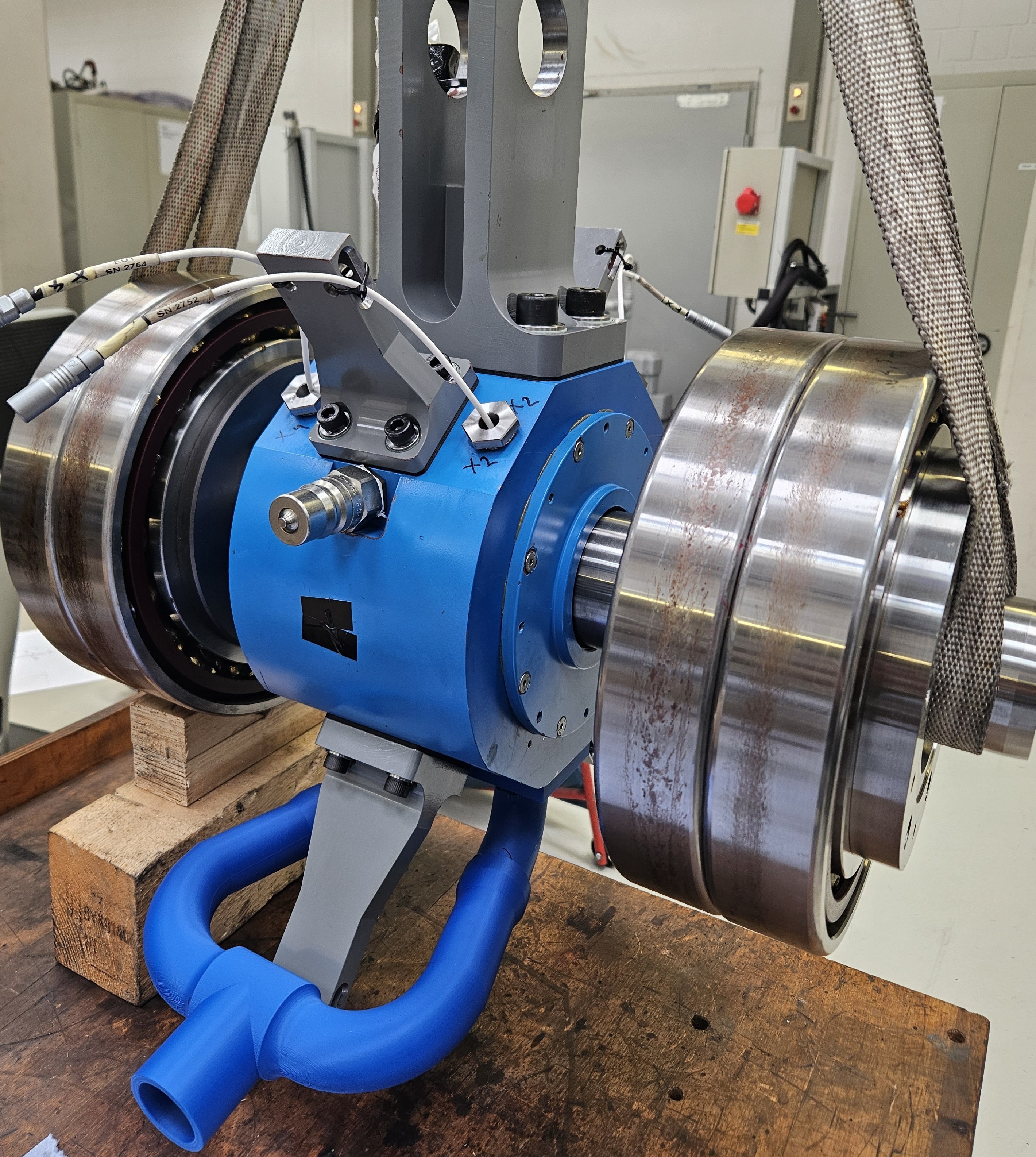Test bench for investigating mixed friction conditions
The mixed friction test rig is designed for the investigation of lubricated circular cylindrical radial plain bearings. The tests focus on the running-in and wear behavior of slow and highly loaded plain bearings, but can also cover other areas of the Stribeck curve with minor modifications.
The test housing with built-in test bearing is located on the test shaft between two support bearings. Several displacement sensors and alignment chains allow the shaft displacement and inclination to be measured and adjusted during the test. A hydraulic cylinder applies the stationary force directly to the test container, enabling surface pressures of up to 20 MPa. To utilize a wide speed range, the test shaft can be coupled directly or via a transmission gear with the three-phase motor. Due to the electrical insulation of the test shaft and test bearing, the running-in behavior of plain bearings can be investigated with the aid of the contact resistance. A coordinate measuring machine is used to characterize the wear and the surface.
Various oil units can be combined with the mixed friction test rig to lubricate the test bearing, whereby the lubrication can be pressure or volume flow controlled. The range of possible test lubricants extends from ISO-VG-32 to ISO-VG-320.
A variety of tests are possible on the mixed friction test rig, including single-blade installations, transient tests and the influence of oil cleanliness classes on bearing behavior. The measurement results obtained are also used at the institute to further develop the internal plain bearing calculation programs.
Key test rig data:
| Parameters | Nominal value | Unit |
| Maximum speed | 2.5 to 4000 | min-1 |
| Maximum radial plain bearing diameter D | 100 | mm |
| Maximum bearing width B | 50 | mm |
| Maximum stationary force | 72 | kN |
| Lubricant feed temperature | 20 to 60 | °C |
| Measuring sensors | 15 temperature sensors on the test plain bearing Lubricant supply temperature Lubricant pressure and volume flow Speed, torque and angle measurement Contact resistance measurement 4 displacement sensors | |



